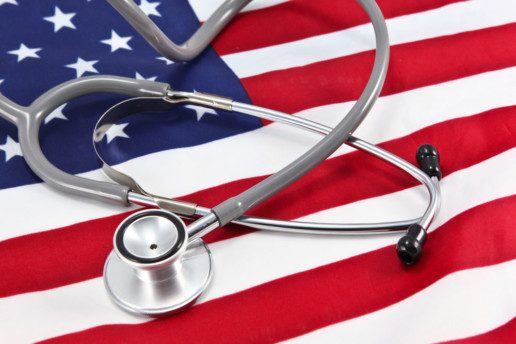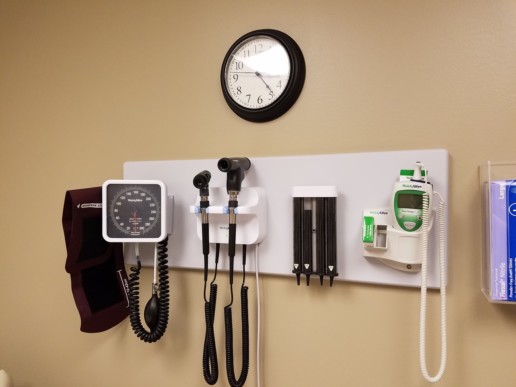Eligibility, lack of plans keep millennials from retirement saving
As millennials reach the age to save for retirement, there is a clear lack-of-knowledge in the arena of what plans they need and how to save for them with the continuing costs of their lifestyles. In this article, we take a look at why this is.
Millennials are way behind on retirement savings, but it has nothing to do with self-indulgence or feasts on avocado toast.
Instead, what they actually need are retirement plans, and earlier eligibility to save in them.
A new report from the National Institute of Retirement Security highlights millennials’ precarious retirement futures with the news that only a third are saving for retirement. It’s not because they don’t want to, or are being extravagant, because when the numbers are crunched they actually save at rates equal to or higher than those of their elders—even if not as many of them can do so.
Millennials are getting a raw deal. Not only are traditional defined benefit plans disappearing, with the likelihood that a millennial might actually be able to participate in one, they’re worried that Social Security—which runs way behind the cost of living anyway—will be of even less help to them in the future as an income replacement than it already is for current retirees. Add to that the fact that more than half of millennials are expected to live to age 89 or even older, and they have the added worry of outliving whatever savings they might have managed to stash.
In fact, millennials need to save way more than their elders to stand a chance of having a retirement that honors the meaning of the word. Says the report, “[S]ome experts estimate that millennials will need to make pretax retirement plan contributions of between 15 percent to 22 percent of their pretax salary, which at 22 percent, is more than double the recommendation of previous generations.”
They’re viewed as irresponsible, but 21 percent are already worried about their retirement security, says the report, and while 51 percent of GenXers and boomers contribute to their own retirement plans, just 34.3 percent of millennials participate in an employer’s plan, although 66 percent work for bosses that offer such plans.
In fact, 66.2 percent of millennials have no retirement savings at all. Zip, zilch, zero. And millennial Latinos? A whopping 83 percent have a goose egg, not a nest egg. Latinos have it much worse, incidentally, than any other millennials group, with just 19.1 percent of millennial Latinos and 22.5 percent of Latinas participating in an employer-sponsored plan, compared with 41.4 percent of Asian men and 40.3 percent of millennial white women—who have the highest rates of participation in a retirement plan.
Despite working for an employer who provides workers with a retirement plan, millennials don’t always have a way to save, since said employer may have set barriers in place to prevent participation until an employee has been with the company for at least a year. And millennials are, of course, known as the job-hopping generation—so if they don’t stay in one place they never qualify. Close to half of millennials—40.2 percent—say they’re shut out of retirement plans because of employers’ eligibility requirements, including working a minimum number of hours or having a minimum tenure on the job.
But don’t accuse them of having no desire to participate: when they’re eligible, more than 90 percent do so.
Read the article.
Source:
Satter M. (2 March 2018). "Eligibility, lack of plans keep millennials from retirement saving" [Web Blog Post]. Retrieved from address https://www.benefitspro.com/2018/03/02/eligibility-lack-of-plans-keep-millennials-from-re/
Trump urges legal action against opioid manufacturers
Where does Trump stand on the Opioid Crisis? Find out in this article from Benefits Pro.
President Trump says he wants his administration to take legal action against opioid manufacturers.
“Hopefully we can do some litigation against the opioid companies,” Trump said at an event organized at the White House on the opioid epidemic.
Earlier in the week, Attorney General Jeff Sessions announced that the Justice Department would be filing a statement of interest in support of a lawsuit launched by more than 400 local governments around the country against pharmaceutical manufacturers. The suit accuses drug-makers of using deceptive advertising to sell powerful, addictive pain medication and for covering up the dangers associated with their use.
It’s not clear whether Trump’s remarks were a reference to the action Sessions has already taken or whether the president is envisioning additional legal action, since he said during the event that he would ask the attorney general to sue.
Trump also promised during his presidential campaign to take on pharmaceutical companies over rising drug prices, accusing them of “getting away with murder.” Since his election, however, he has done very little to translate those tough words into policy. A meeting between Trump and pharmaceutical companies early in his administration was described in positive terms by both sides.
The president also has suggested stiffer sentences for drug dealers, even reflecting positively on countries that execute them.
“Some countries have a very, very tough penalty – the ultimate penalty,” he said. “And, by the way, they have much less of a drug problem than we do.”
In recent years, public opinion on criminal justice in general and the drug war specifically has shifted in favor of an approach that favors treatment over incarceration. Reducing the prison population has been a goal that has increasingly earned bipartisan support, both at the federal level and in state legislatures around the country. However, Trump and Sessions have both stuck to the “tough-on-crime” mantra that dominated in the 1990’s.
The administration has signaled that it will not support legislation to reduce mandatory minimum sentences for drug offenses. And although the Justice Department has not yet gone after marijuana distributors in states that have legalized the drug, such as Colorado and California, Sessions has rescinded an Obama-era policy that stated that the DOJ would take a hands off approach to pot in those states.
Read the article.
Source:
Craver J. (2 March 2018). "Trump urges legal action against opioid manufacturers" [Web Blog Post]. Retrieved from address https://www.benefitspro.com/2018/03/02/trump-urges-legal-action-against-opioid-manufactur/
Apple launching concierge health care centers for employees
Did you know Apple is now offering healthcare centers for their employees? Check out this article from Benefit Pro for further information.
This spring, Apple employees will see the first phase of Apple’s new approach to employee health care: on-site health clinics.
According to Healthcare IT News, Apple plans to launch a group of internal health centers as it moves to boost the health and wellness of its employees. According to the report, the company has already “quietly published a webpage for the program, called AC Wellness Network, which includes a description of the company’s goals as well as information on a number of open positions.”
“AC Wellness Network believes that having trusting, accessible relationships with our patients, enabled by technology, promotes high-quality care and a unique patient experience,” Apple has said on the webpage. It continues, “The centers offer a unique concierge-like healthcare experience for employees and their dependents. Candidates must have an appreciation for the patient experience and passion for wellness and population health—integrating best clinical practices and technology in a manner that drives patient engagement.”
Apple’s move comes in the wake of an earlier declared partnership among Amazon, JPMorgan Chase and Berkshire Hathaway for their own independent health care company intended to bolster employee health at lower cost than conventional providers.
AC Wellness, says the report, will exist as “an independent medical practice,” although the company is a subsidiary of Apple. Job listings include not just physicians but also such positions as workflow designers, and the website listings suggest the first centers will be located in Santa Clara, California and in the company’s Cupertino, California campus.
Other recent health care steps taken by the company, according to an HRDive report, include its January announcement that it is making personal health records accessible on the latest iPhones, as well as its exploration of ways its Apple Watch could have medical applications, like detecting irregular heartbeats in wearers.
According to a CNBC report, some former Stanford Health Care employees have been affiliated with AC Wellness for at least five months. Says Healthcare IT News, “[t]hese sources also said that Apple will use the centers as a testing ground for its upcoming health and wellness products prior to large-scale consumer rollout, and that the company notified third-party vendors this week about its upcoming health clinics.”
Read the article.
Source: Satter M. (1 March 2018). "Apple launching concierge health care centers for employees" [Web Blog Post]. Retrieved from address https://www.benefitspro.com/2018/03/01/apple-launching-concierge-health-care-centers-for/
Employer Responsibility Under the Affordable Care Act
Here's a helpful chart from the Kaiser Family Foundation to decipher the penalties employers may have for not offering ACA coverage in 2018.
The Affordable Care Act does not require businesses to provide health benefits to their workers, but applicable large employers may face penalties if they don’t make affordable coverage available. The employer shared responsibility provision of the Affordable Care Act penalizes employers who either do not offer coverage or do not offer coverage that meets minimum value and affordability standards. These penalties apply to firms with 50 or more full-time equivalent employees. This flowchart illustrates how those employer responsibilities work.
Read the article.
Source:
Kaiser Family Foundation (5 March 2018). "Employer Responsibility Under the Affordable Care Act" [Web Blog Post]. Retrieved from address https://www.kff.org/infographic/employer-responsibility-under-the-affordable-care-act/
Strengthening the Relationship between Education and Employers: Johnny C. Taylor, Jr., Appointed Chair of President’s Board of Advisors on HBCUs
From the SHRM CEO, here is his opinion on the newly appointed Chair of President’s Board of Advisors on HBCUs.
Johnny C. Taylor, Jr., SHRM-SCP, president and chief executive officer of the Society for Human Resource Management, was appointed chair of the President’s Board of Advisors on Historically Black Colleges and Universities (HBCUs) at a White House ceremony today.
In accepting the volunteer advisory appointment to the White House Initiative on HBCUs by President Donald Trump, Taylor gave these remarks:
Thank you, President Trump and Secretary DeVos.
I appreciate the trust you have placed in me to chair the President’s Board of Advisors on HBCUs. It has been my life’s work to unleash talent — in all its forms, from wherever it originates.
As CEO of the Society for Human Resource Management (SHRM), I work with employers across the country. No matter their industry, size or longevity, today’s organizations all share the same challenge — closing the skills gap while building diverse, inclusive, engaged workforces.
For each of them, the “War for Talent” will never end and, thanks to this incredibly strong economy we’re experiencing, it is now a way of life. And today, people are an organization’s only competitive edge.
Employers depend on our country’s educational institutions as a reliable source of the multi-faceted talent they need. HBCUs are a critical conduit for this talent. Every year, over 300,000 students turn to these institutions for their education and to prepare them for their careers.
This President’s Advisory Board can be the nexus between higher education institutions and employers. As a CEO (in both non-profit and for-profit businesses), a former Fortune 500 chief HR executive, and someone with over 7½ years of experience in the HBCU space, I am up for this very challenge.
At SHRM, we are the experts on people and work and on building powerfully diverse organizational cultures that drive success. SHRM’s 300,000 members impact the lives of over 100 million people in the American workforce. SHRM is also an experienced academic partner, currently providing human resources curricula through 465 programs on 354 college campuses.
By working together, across all sectors, the HR profession, HBCUs and this Advisory Board can strengthen the relationship between education and employers. This Advisory Board can facilitate this critical relationship and support innovations in work-based learning opportunities for HBCU students. And as the world’s largest human resources association, SHRM can work with CEOs to connect industry to the diverse talent at these institutions.
This Board has an incredible opportunity to highlight HBCUs as wellsprings of the diverse talent American employers want and need today. HR and education, along with the support of this administration, must move together, forward.
Read the article.
Source: SHRM (27 February 2018). "Strengthening the Relationship between Education and Employers: Johnny C. Taylor, Jr., Appointed Chair of President’s Board of Advisors on HBCUs" [Web Blog Post]. Retrieved from address https://blog.shrm.org/blog/strengthening-the-relationship-between-education-and-employers-johnny-c-tay
Ahead of the Midterms, Voters across Parties See Costs as their Top Health Care Concern
From Kaiser Health News is this poll deciphering where the public sits ahead of Midterms. What is there top healthcare concern? Costs. Get all the information in this article.
At a time when the Trump Administration is encouraging state efforts to revamp their Medicaid programs through waivers, the latest Kaiser Family Foundation tracking poll finds the public splits on whether the reason behind proposals to impose work requirements on some low-income Medicaid beneficiaries is to lift people out of poverty or to reduce spending.
The Centers for Medicare and Medicaid Services in January provided new guidance to states and has since approved such waivers in two states (Kentucky and Indiana). Eight other states have pending requests
When asked the goal of work requirements, four in 10 (41%) say it is to reduce government spending by limiting the people enrolled in the program, while a third (33%) say it is to lift people out of poverty as proponents say.
While larger shares of Democrats and independents say the reason is to cut costs, Republicans are more divided, with roughly equal shares saying it is to lift people out of poverty (42%) as to reduce government spending (40%). People living in the 10 states that have approved or pending work requirement waivers are similarly divided, with near-equal shares saying the goal is to lift people out of poverty (37%) as to reduce government spending (36%). This holds true even when controlling for other demographic variables including party identification and income.
In addition to work requirements, five states are currently seeking Medicaid waivers to impose lifetime limits on the benefits that non-disabled adults could receive under the Medicaid program. The poll finds the public skeptical of such a shift, with two thirds (66%) saying Medicaid should be available to low-income people as long as they qualify, twice the share (33%) as say it should only provide temporary help for a limited time.
Substantial majorities of Democrats (84%) and independents (64%) say Medicaid should be available without lifetime limits, while Republicans are divided with similar shares favoring time limits (51%) and opposing them (47%).
These views may reflect people’s personal experiences with Medicaid and the generally positive views the public has toward the current program, which provides health coverage and long-term care to tens of millions of low-income adults and children nationally.
Seven in 10 Americans report a personal connection to Medicaid at some point in their lives – either directly through their own health insurance coverage (32%) or their child being covered (9%), or indirectly through a friend or other family member (29%).
Three in four (74%) hold favorable views of Medicaid, including significant majorities of Democrats (83%), independents (74%) and Republicans (65%). About half (52%) of the public say the current Medicaid program is working well for low-income enrollees, while about a third (32%) say it is not working well.
Most Residents of Non-Expansion States Favor Medicaid Expansion to Cover More Low-Income People
Under the Affordable Care Act, most states expanded their Medicaid programs to cover more low-income adults. In the 18 states that have not done so, a majority (56%) say that their state should expand Medicaid to cover more low-income adults, while nearly four in 10 (37%) say their state should keep Medicaid as it is today.
Slightly more than half of Republicans living in the 18 non-expansion states (all of which have either Republican governors, Republican-controlled legislatures or both) say their state should keep Medicaid as it is today (54%) while four in 10 (39%) say their state should expand their Medicaid program.
Favorable Views of the ACA Reach New High in More Than 80 KFF Polls
The poll finds 54 percent of the public now holds a favorable view of the Affordable Care Act, the highest share recorded in more than 80 KFF polls since the law’s enactment in 2010. This reflects a slight increase in favorable views since January (50%), while unfavorable views held steady at 42 percent.
The shift toward more positive views comes primarily from independents (55% view the ACA favorably this month, up slightly from 48% in January).
Public Remains Confused about Repeal of the ACA’s Individual Mandate
The poll also probes the public’s awareness about the repeal of the ACA’s requirement that nearly all Americans have health insurance or pay a fine, commonly known as the individual mandate. The tax legislation enacted in December 2017 eliminated this requirement beginning in 2019.
About four in 10 people (41%) are aware that Congress repealed the individual mandate, a slight increase from January, when 36 percent were aware of the provision’s repeal.
However, misunderstandings persist. Most (61%) of the public is either unaware that the requirement has been repealed (40%) or is aware of its repeal but mistakenly believes the requirement will not be in effect during 2018 (21%). Few (13%) are both aware that it has been repealed and that it remains in effect for this year.
Costs are Voters’ Top Health Care Concern ahead of the 2018 Midterm Elections
Looking ahead to this year’s midterm elections, the poll finds Democratic, Republican and independent voters most often cite costs as the health care issue that they most want candidates to address.
When asked to say in their own words what health care issue that they most want candidates to discuss, more than twice as many voters mention health care costs (22%) as any other issue, including repealing or opposing the Affordable Care Act (7%). Costs are the clear top issue for Democrats (16%) and independents (25%), and one of the top issues for Republicans (22%) followed by repealing or opposing the ACA (17%).
Designed and analyzed by public opinion researchers at the Kaiser Family Foundation, the poll was conducted from February 15-20, 2018 among a nationally representative random digit dial telephone sample of 1,193 adults. Interviews were conducted in English and Spanish by landline (422) and cell phone (771). The margin of sampling error is plus or minus 3 percentage points for the full sample. For results based on subgroups, the margin of sampling error may be higher.
Read the article.
Source: Kaiser Family Foundation (1 March 2018). "Poll: Public Mixed on Whether Medicaid Work Requirements Are More to Cut Spending or to Lift People Up; Most Do Not Support Lifetime Limits on Benefits" [Web Poll Post]. Retrieved from address https://www.kff.org/medicaid/press-release/poll-public-mixed-medicaid-work-requirements-more-to-cut-spending-lift-people-up-most-do-not-support-lifetime-limits/
Change to 2018 HSA Family Contribution Limit
Yesterday, the IRS released a bulletin that includes a change impacting contributions to Health Savings Accounts (HSAs).
- The family maximum HSA contribution limit has decreased from $6,900 to$6,850.
- This change is effective January 1, 2018 and for the entire 2018 calendar year.
- The self-only maximum HSA contribution limit has not changed.
- This means that current 2018 HSA contribution limits are $3,450 (self-only) and $6,850 (family).
Why is the change happening so abruptly?
The IRS continues to make adjustments to accommodate the new tax law that passed at the end of 2017. Tax reform updates require the IRS to implement a modified method of calculating inflation-adjusted or cost-of-living-adjusted limits for 2018. The IRS is now using a different index (Chained Consumer Price Index for All Urban Consumers) to calculate benefit-related inflationary adjustments.
Typically, the IRS adjusts the HSA limits for inflation on an annual basis about six months before the start of the impacted year. For example, the IRS established the 2018 limits in May 2017. Today’s bulletin supersedes those limits.
Resource:
• IRS Bulletin IRB 2018-10, March 5, 2018
While Talk About Opioids Continues In D.C., Addiction Treatment Is In Peril In States
How is Washington handling the opioid crisis? Let's find out in this article from Kaiser Health News.
Opioids were on the White House agenda Thursday — President Trump convened a summit with members of his administration about the crisis. And Congress authorized funds for the opioid crisis in its recent budget deal — but those dollars aren’t flowing yet, and states say they are struggling to meet the need for treatment.
The Oklahoma agency in charge of substance abuse has been told by the state’s legislature to cut more than $2 million from this fiscal year’s budget.
“Treatment dollars are scarce,” said Randy Tate, president of the Oklahoma Behavioral Health Association, which represents addiction treatment providers.
It’s like dominoes, Tate said. When you cut funding for treatment, other safety-net programs feel the strain.
“Any cuts to our overall contract,” he said, “really diminish our ability to provide the case management necessary to advocate for homes, food, shelter, clothing, primary health care and all the other things that someone needs to really be successful at tackling their addiction.”
In just three years, Oklahoma’s agency in charge of funding opioid treatment has seen more than $27 million dollars chipped away from its budget — thanks to legislative gridlock, slashed state taxes and a drop in oil prices (with the additional loss in state tax revenue that resulted).
Jeff Dismukes, a spokesman for Oklahoma’s Department of Mental Health and Substance Abuse Services, says the already lean agency has few cost-cutting options left.
“We always cut first to administration,” he said, “but there’s a point where you just can’t cut anymore.”
The agency may end up putting off payments to treatment providers until July — the next fiscal year. Tate says that could be devastating.
“Very thinly financed, small rural providers are probably at risk of going out of business entirely — up to and including rural hospitals,” he said.
Getting treatment providers to open up shop in rural areas is really hard, even in good times, and more financial uncertainty could make that problem worse. In the meantime, according to an Oklahoma state commission’s opioid report, just 10 percent of Oklahomans who need addiction treatment are getting it.
That statistic is similar in Colorado. And as 2018 began, Colorado’s escalating opioid crisis got worse, when the state’s largest drug and alcohol treatment provider, Arapahoe House, shut its doors.
The facility provided recovery treatment to 5,000 people a year. Denise Vincioni, who directs another treatment center, the Denver Recovery Group, says other facilities have scrambled to pick up the patients.
Most of Arapahoe’s clients were on Medicaid. Autumn Haggard-Wolfe, a two-time Arapahoe House client who is now in recovery, worries the facility’s closing will have dire consequences, especially for people who need inpatient care, as she did.
“I feel like the only other option right now in therapy would be jail for people,” she said, “and people die in there from withdrawing.”
Arapahoe House’s CEO blamed its closure on the high cost of care and poor government reimbursement for services.
The mother of Colorado state lawmaker Brittany Pettersen struggled with addiction, and was treated at Arapahoe House. Pettersen says treatment centers rely on a crazy quilt of funding sources and are chronically underfunded — often leaving people with no treatment options.
“We have a huge gap in Colorado,” Pettersen said, “and that was before Arapahoe House closed.”
She is pushing legislation in the state to increase funding for treatment. But to get tens of millions of dollars in federal matching funds, Colorado lawmakers need to approve at least $34 million a year in new state spending.
That price tag may simply be too high for some lawmakers. But either way, she added, “It’s going to take a lot to climb out of where we are.”
Colorado did get new federal funds to fight the opioid crisis through the 21st Century Cures Act, passed in December of 2016, but it was just $7.8 million a year for two years — divvied up among a long list of programs.
Read the article.
Source: Daley J.,Fortier J. (5 March 2018). "While Talk About Opioids Continues In D.C., Addiction Treatment Is In Peril In States" [Web Blog Post]. Retrieved from address https://khn.org/news/while-talk-about-opioids-continues-in-dc-addiction-treatment-is-in-peril-in-states/
Fresh Brew With Our Newest Employee - Rob Glover
Welcome to our brand new segment, Fresh Brew, where we will be exploring the delicious coffees, teas, and snacks of some of our employees! You can look forward to our Fresh Brew blog post on the first Friday of every month.
“Don’t worry about all the Medicare options. I’ll help make it clear and simple.”
Before joining Saxon Financial, Rob trained and worked as an independent sales agent specializing in UnitedHealthcare Medicare plans. He is excited to be joining Saxon in the Senior Solutions department and build on his experience by serving people with added carrier options.
Rob focuses on listening, understanding and educating his clients since Medicare is not one-size-fits-all. When you meet with Rob, his goals are to help you feel like family and have the confidence and understanding to select the perfect Medicare plan for you.

Favorite Brew
Morning:
“Ethiopian Harrar Coffee made with a French Press, hand ground and prepared at home.”
Afternoon:
“British Blend black tea brewed at home. Cold but no ice!”
Evening:
“Stout, home brewed.”
Rob notes: “If I don’t make it myself, then Cappie’s in Loveland or Jungle Jim’s in Eastgate.”
Favorite Snack
“Forget snacks; give me pizza!”
Is a Health Savings Account Worth Your Time? The Best Advice from an Experienced Group Benefits Consultant.
This month’s CenterStage features Kelley Bell, a Group Benefits Consultant at Saxon. With over 25 years of experience in the financial industry, Kelley knows a thing or two on HSAs or Health Savings Accounts – what they are, who is eligible, how they’re funded, and when they can be used.
Kelley enjoys partnering with business owners and human resources managers to be their Healthcare Consultant. She understands that each business is unique and is dedicated, accessible and proactive in serving the needs of each client.
So, is an HSA a right fit for you? Let’s find out!
The Break-Down
Very similar to personal savings accounts, money in a Health Savings Account (HSA) is used to pay for eligible healthcare expenses (medical, dental and vision). You, not your employer or insurance company, own and control the money in your HSA. To be eligible for an HSA, you must have a special type of health insurance called a high-deductible health plan (HDHP).
With an HSA you can make tax-deductible contributions each year to pay for current and future healthcare costs. What you don't use in any given year will stay invested and continue to grow tax-free, assuming you eventually pull it out to use for medical costs. -CNN Money
Saxon offers HDHP group plans from one person on up that can be paired with the HSA. Here are some different highlights you should know if you are considering this type of Health Savings Account:
- HSA's aren't ideal for everyone. If having a high deductible seems too risky to you – or if you anticipate having significant healthcare expenses – a plan with a lower deductible and lower co-pays might make more sense.
- There are tax advantages, because deductibles on the HDHP are higher, premiums are generally lower.
- There is a maximum contribution limit per calendar year of $3,400 for individuals and $6,850 for families for 2018. Sometimes, these maximums do not reach your deductible. A personal tip: “Try to add a small amount via pre-tax payroll. You can change the amount anytime and if you have a significant procedure, try adding the funds to the account before the payment is due
- If you’re over the age of 55, you can make an additional “catch-up” contribution of $1,000 to that account.
- It is your account. You make the decisions about the contributions and its use. If the funds are not used, the money rolls over to the next year and continues to grow over time.
- If your employer switches to a different plan, your HSA is still your HSA. The money within your HSA is yours and can continue to be used for eligible medical expenses until it runs out.
- Most banks provide you with access to your HSA through a checkbook and debit card. You can use these to pay your doctor, as well as for prescriptions at the pharmacy.
Whether an HSA is a good fit for you is determined through each of these highlights, but it comes down to personal preference and your overall health. There’s a lot of freedom with HSAs – which is why it’s important to take your time considering every perk and downfall.
Contributions, Withdrawals, Earnings, & Roll Over
The money you deposit into the account is not taxed. The idea is people will spend their healthcare dollars more wisely if they're using their own money.
However, others can contribute to your HSA. Contributions can come from various sources, including you, your employer, a relative and anyone else who wants to add to your HSA. However, if you exceed the maximum contribution limit, you could be penalized by the IRS.
- Pre-tax contributions. Contributions made through payroll deposits (through your employer) are typically made with pre-tax dollars, which means they are not subject to federal income taxes. In most states, contributions are not subject to state income taxes either. Your employer can also make contributions on your behalf, and the contribution is not included in your gross income.
- Tax-deductible contributions. Contributions made with after-tax dollars can be deducted from your gross income on your tax return, which means you may owe less tax at the end of the year.
It’s also key to understand withdrawals, earnings, and roll over with HSAs:
- Tax-free withdrawals. Withdrawals from your HSA are not subject to federal (or in most cases, state) income taxes if they are used for qualified medical expenses.
- Earnings are tax-fee. Any interest or other earnings on the assets in the account are tax free.
- Funds roll over. If you have money left in your HSA at the end of the year, it rolls over to the next year.
- Investment tool. Many people use it as an investment tool, not just for current or future medical expenses, but for long-term retirement planning.
Keep your receipts in the event that you are audited by the IRS to show that you used the funds in your HSA for eligible medical expenses.
Conclusion
A Health Savings Account can be a great choice for people who wish to limit their upfront healthcare costs while saving for future expenses. HSAs go together with HDHPs. In addition, favorable tax treatment means you may owe less in taxes on your income tax return. What’s more, an HSA may allow you to pay in pre-tax dollars for items your employer’s other insurance options don’t cover, such as eyeglasses.
HSAs have the potential to become “more compelling than a 401(k)” due to tax-deductible and tax-deferred incentives. Does it sound like you’re a perfect match for a Health Savings Account? Still not sure if a HSA a good fit for you? Contact Kelley at 513-774-5493 for more information on taking this step towards a better health plan.















